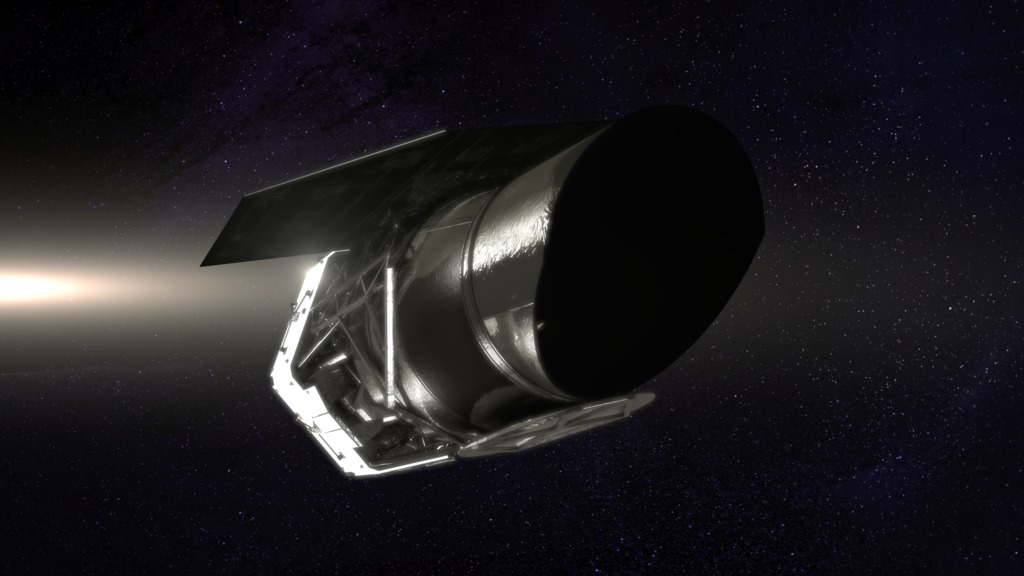Roman Space Telescope Milky Way Exoplanet Locations Animation
Animation illustrating the idea of finding many new exoplanets through gravitational microlensing. These new discoveries will compliment the exoplanet survey begun by Kepler.
Visible light imagery provided by Axel Mellinger, Central Michigan Univ.
Credit: NASA Goddard/A. Mellinger (Central Michigan Univ.)
The first exoplanets to be discovered were gas giants, but today it is becoming clear that there are probably many more "small" planets, in the Earth to Super-Earth range, than there are giants. Discovering the statistics of these planets is crucial for understanding their formation and commonality. Gravitational microlensing is a method of finding exoplanets by watching for when their gravity slightly magnifies the light from background stars. This technique will tell us how common Earth- like planets are, and will guide the design of future exoplanet imaging missions.
More than 20 planets have been discovered from the ground using this technique. The Nancy Grace Roman Space Telescope microlensing survey will detect many more such planets, including smaller mass planets since the planet "spike" will be far more likely to be observed from a space-based platform. This will lead to a statistical census of exoplanets with masses greater than a tenth of the Earth's mass from the outer habitable zone out to free floating planets. The results from the Roman Space Telescope microlensing survey will complement the exoplanet statistics from Kepler, and will provide answers to questions about planet formation, evolution, and the prevalence of planets in the galaxy.
A more accurate distribution of potential exoplanet locations found through gravitational microlensing. These new discoveries will compliment the exoplanet survey begun by Kepler.
Visible light imagery provided by Axel Mellinger, Central Michigan Univ.
Credit: NASA Goddard/A. Mellinger (Central Michigan Univ.)
Credits
Please give credit for this item to:
NASA's Goddard Space Flight Center
-
Producer
- Scott Wiessinger (USRA)
-
Technical support
- Aaron E. Lepsch (ADNET Systems, Inc.)
-
Animator
- Scott Wiessinger (USRA)
Release date
This page was originally published on Tuesday, September 20, 2016.
This page was last updated on Wednesday, May 3, 2023 at 1:48 PM EDT.

